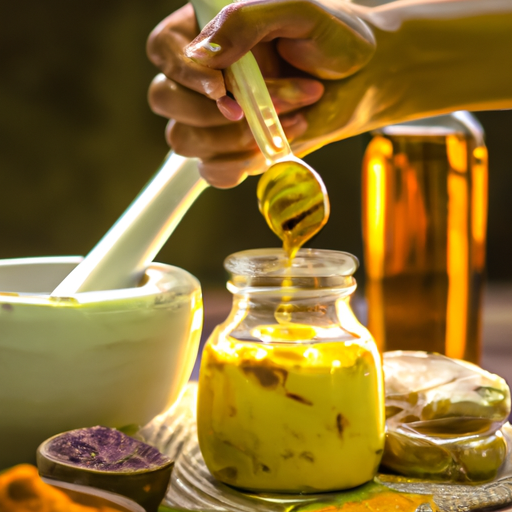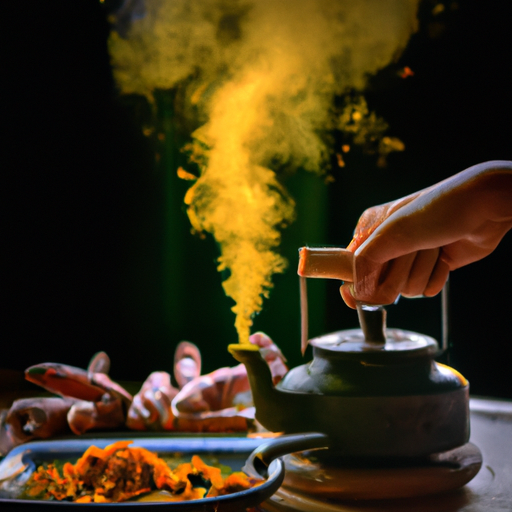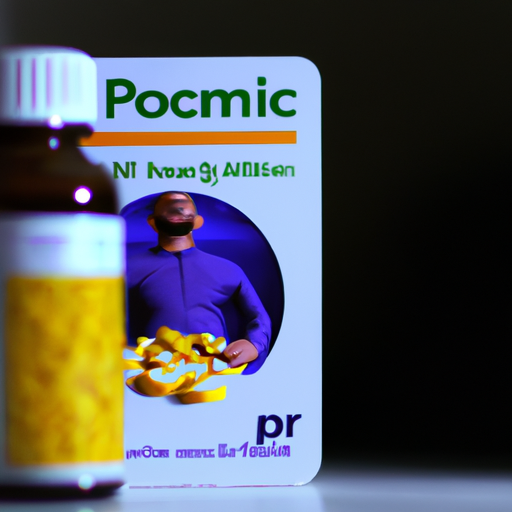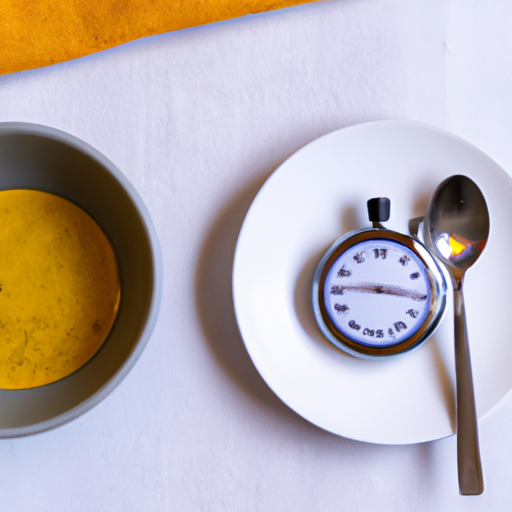Turmeric is a spice that has been utilized for generations in Indian and Ayurvedic medicine. It is revered for its anti-inflammatory and antioxidant qualities, which have led to its popularity as a sought-after component in skincare products.
But did you know that you can make your own turmeric paste for skin at home? In this article, I will guide you through the process of making turmeric paste and how to use it in your skincare routine.
I was always skeptical about using natural ingredients in my skincare routine, but after trying turmeric paste, I was pleasantly surprised. Not only did it improve the overall appearance of my skin, but it also helped reduce inflammation and clear up my acne.
Making your own turmeric paste is not only cost-effective, but it also allows you to control the ingredients you are putting on your skin. So, let’s get started on making your own turmeric paste for healthy, glowing skin!
Key Takeaways
- Turmeric paste can be made at home for skincare, and it is cost-effective and allows you to control the ingredients.
- Turmeric paste has anti-inflammatory, antioxidant, and antibacterial properties that can improve the overall appearance of the skin, reduce inflammation, clear up acne, and reduce the appearance of acne scars and dark spots.
- Turmeric paste can be used for skincare in the form of face masks or body scrubs, which can brighten and even out skin tone, exfoliate dead skin cells, improve circulation, and leave skin feeling soft and smooth.
- Precautions and safety tips should be followed when using turmeric paste to avoid adverse reactions, such as skin irritation, dryness, and staining. Mixing turmeric with other natural ingredients like honey, yogurt, or coconut oil can enhance its skincare benefits.
The Benefits of Turmeric for Skin
Turmeric’s got some serious skin benefits, so let’s dive in!
One of the most popular ways to use turmeric for the skin is by making a turmeric face mask. Turmeric is known for its anti-inflammatory and antioxidant properties, which make it an excellent ingredient for those with acne-prone skin. Its natural antibacterial properties also help reduce the appearance of acne scars and dark spots.
In addition to being great for acne-prone skin, turmeric also has anti-aging benefits. Its antioxidant properties help protect the skin from free radicals, which can cause premature aging. Turmeric can also improve skin elasticity and reduce the appearance of fine lines and wrinkles.
So, if you want to achieve a youthful glow, turmeric is definitely worth adding to your skincare routine. Now that we know about the benefits of turmeric for the skin, let’s gather our ingredients to make a turmeric paste.
Gather Your Ingredients
Before diving into this natural skincare remedy, it’s important to gather all of the ingredients needed for the recipe. To make your own turmeric paste for skin, you will need the following:
- Turmeric powder – 1/4 cup
- Water – 1/2 cup
- Coconut oil – 1/4 cup
- Black pepper – 1/4 teaspoon
Preparation steps for making the turmeric paste are relatively simple, but require a few key tools. You’ll need a small saucepan, a whisk, and a clean, airtight container for storing the paste once it’s made.
Now that you have everything you need, it’s time to move on to mixing your turmeric paste.
Mixing Your Turmeric Paste
Now that you’ve got all your ingredients ready, it’s time to mix them together and create a magical potion for your skin! When it comes to mixing techniques, there are a few different options to choose from. Some people prefer to mix all the ingredients together in a bowl with a spoon, while others like to use a blender or food processor for a smoother consistency. If you’re using a blender, make sure to blend on low speed to avoid creating excess air bubbles.
It’s important to note that the color of your turmeric paste may vary depending on the type of turmeric you use. Some people prefer a brighter yellow color, while others don’t mind a more muted shade. If you’re looking for a brighter color, try using fresh turmeric root instead of powdered turmeric. Additionally, adding a small amount of black pepper to your paste can help increase the bioavailability of the curcumin in turmeric, which is the compound responsible for its many skin benefits. Once your turmeric paste is mixed to your desired consistency and color, it’s time to move on to storing it properly for future use.
Table:
| Mixing Techniques | Color Variations |
|---|---|
| Mixing by hand with a spoon | Bright yellow with powdered turmeric |
| Using a blender or food processor | Muted shade with powdered turmeric |
| Using fresh turmeric root | Bright yellow |
| Adding black pepper | Enhances color and increases bioavailability of curcumin |
As you can see, there are a variety of mixing techniques and ingredient choices that can impact the color and consistency of your turmeric paste. Now that your paste is mixed and ready to go, it’s important to properly store it to ensure it stays fresh and effective.
Storing Your Turmeric Paste
To ensure your turmeric mixture stays fresh and effective, you’ll want to know the proper way to store it. Once you’ve mixed your turmeric paste, it’s important to transfer it into an airtight container.
A glass jar with a tight-fitting lid is ideal for storing your turmeric paste. Make sure that the jar is clean and dry before transferring the turmeric paste to it.
Store the jar in a cool, dry place, away from direct sunlight. The shelf life of turmeric paste is typically around 1-2 weeks when stored properly.
After this period, the paste may start to lose its potency and effectiveness. To ensure that you’re using the most effective turmeric paste for your skin, it’s important to make a fresh batch every 1-2 weeks.
With proper storage and regular use, turmeric paste can help improve the overall health and appearance of your skin. In the next section, we’ll discuss how to use turmeric paste for skincare.
Using Turmeric Paste for Skincare
You’re probably wondering how you can incorporate this magical ingredient into your skincare routine. Well, there are a couple of ways you can use turmeric paste for your skin, such as making turmeric face masks or turmeric body scrubs. Turmeric face masks are a wonderful way to brighten and even out your skin tone, reduce acne and inflammation, and give your skin a healthy glow. You can make a simple turmeric face mask by mixing one tablespoon of turmeric paste with one tablespoon of honey and applying it to your face. Leave it on for 10-15 minutes, then rinse it off with warm water. You can also add other ingredients like yogurt, lemon juice, or coconut oil to enhance the benefits of your turmeric face mask.
Turmeric body scrubs are another great way to incorporate turmeric into your skincare routine. They can help exfoliate dead skin cells, improve circulation, and leave your skin feeling soft and smooth. To make a turmeric body scrub, mix one cup of sugar or salt with half a cup of coconut oil and two tablespoons of turmeric paste. Rub the mixture onto your skin in circular motions, focusing on dry areas like your elbows and knees, then rinse it off with warm water. You can also add other ingredients like essential oils or ground oats to customize your turmeric body scrub. Just remember to be gentle when using a body scrub, as over-scrubbing can damage your skin.
As you start using turmeric paste for your skin, it’s important to keep in mind some precautions and safety tips to avoid any adverse reactions.
Precautions and Safety Tips
Before incorporating turmeric into your skincare routine, it’s important to keep in mind some precautions and safety tips to ensure the best results for your skin.
Turmeric paste can be quite staining, so it’s important to handle it with care and avoid any contact with clothes or surfaces that you don’t want to stain. You can wear gloves to apply the paste or use a spoon to avoid direct contact with your skin.
Additionally, while turmeric paste is generally safe for most people, potential side effects may include allergic reactions, skin irritation, and dryness. Always do a patch test on a small area of your skin before applying the paste to your face or body. If you experience any discomfort or irritation, stop using the paste immediately and consult with a dermatologist.
Moving on to other ways to incorporate turmeric into your skincare routine, you can also mix turmeric powder with honey, yogurt, or coconut oil to create a mask. These ingredients will help to moisturize and soothe your skin while also providing the benefits of turmeric.
Other Ways to Incorporate Turmeric into Your Skincare Routine
Mixing turmeric with other natural ingredients can be a great way to enhance your skincare routine. Turmeric face masks are a popular choice, as they can help soothe inflammation and brighten up your complexion. To make a turmeric face mask, simply mix turmeric powder with honey, yogurt, or coconut oil until you get a smooth paste. Apply the paste onto your face, avoiding the eye area, and leave it on for 10-15 minutes before rinsing off with warm water.
You can use this mask once a week to maintain healthy and glowing skin. If you’re looking for a full-body treatment, consider making a turmeric body scrub. This can help exfoliate dead skin cells, improve circulation, and leave your skin feeling soft and supple. To make a turmeric body scrub, mix turmeric powder with sugar or salt, and add a carrier oil such as coconut or olive oil.
Apply the mixture onto your skin in a circular motion, and rinse off with warm water. You can use this scrub once a week, or as needed, to keep your skin looking and feeling its best. Now that you know some of the ways to incorporate turmeric into your skincare routine, let’s move on to some DIY turmeric skincare recipes that you can try at home.
DIY Turmeric Skincare Recipes
Now that we’ve discussed various ways to include turmeric in your skincare routine, let’s dive into some DIY turmeric skincare recipes. These are easy to make and can help improve your skin’s overall health and appearance. Two popular recipes are turmeric face masks and turmeric body scrubs.
Turmeric face masks are great for reducing inflammation, brightening the skin, and fighting acne. To make a simple turmeric face mask, mix together 1 teaspoon of turmeric powder, 1 tablespoon of honey, and 1 tablespoon of plain yogurt. Apply the mixture to your face and leave on for 10-15 minutes before rinsing off with warm water. For a more exfoliating face mask, add in 1 tablespoon of ground oats or almond meal.
| Turmeric Face Mask | Ingredients | Benefits |
|---|---|---|
| Simple Turmeric Face Mask | 1 tsp turmeric powder, 1 tbsp honey, 1 tbsp plain yogurt | Reduces inflammation, brightens skin, fights acne |
| Exfoliating Turmeric Face Mask | 1 tsp turmeric powder, 1 tbsp honey, 1 tbsp plain yogurt, 1 tbsp ground oats or almond meal | Reduces inflammation, brightens skin, fights acne, exfoliates |
Turmeric body scrubs are great for improving circulation, exfoliating dead skin cells, and leaving your skin feeling soft and smooth. To make a simple turmeric body scrub, mix together 1 cup of sugar or salt, 1/4 cup of coconut oil, and 1 teaspoon of turmeric powder. Use the mixture to scrub your body in the shower, focusing on dry or rough areas.
| Turmeric Body Scrub | Ingredients | Benefits |
|---|---|---|
| Simple Turmeric Body Scrub | 1 cup sugar or salt, 1/4 cup coconut oil, 1 tsp turmeric powder | Improves circulation, exfoliates dead skin cells, leaves skin feeling soft and smooth |
Now that you know how to make your own turmeric face mask and body scrub, let’s move on to some tips for achieving the best results.
Tips for Achieving Best Results
When it comes to achieving the best results from your turmeric skincare routine, consistency is key. It’s important to stick to a regular routine to see the full benefits of turmeric on your skin.
Patience is also a virtue as it may take some time to see noticeable results. Additionally, listening to your skin is crucial as everyone’s skin reacts differently to skincare products.
By paying attention to your skin’s needs and making adjustments as necessary, you can optimize the benefits of turmeric for your individual skin type.
Consistency is Key
Remember, practice makes perfect when it comes to getting the right consistency for your turmeric paste. It’s important to keep in mind that the consistency of the paste will affect its effectiveness when applied to the skin. If it’s too thick, it may be difficult to spread evenly, and if it’s too thin, it may not stay on the skin long enough to provide any benefits.
To help you achieve the perfect consistency, here are some tips:
| Column 1 | Column 2 | Column 3 | Column 4 |
|---|---|---|---|
| Start with a small amount of water and turmeric powder. | Mix the two ingredients together until they form a paste. | Add more water or powder as needed to achieve the desired consistency. | Remember that the paste will thicken as it sits, so adjust accordingly. |
By following these guidelines, you’ll be able to create a turmeric paste that is easy to apply and delivers the desired benefits to your skin. Remember, consistency is key, so don’t be afraid to experiment until you find the perfect balance of water and powder. With some patience and practice, you’ll soon be creating turmeric pastes that are both effective and easy to apply.
Patience is a Virtue
Developing a habit of being patient while waiting for results can be a challenging yet rewarding practice. Practicing patience is especially important when it comes to skincare. It takes time and dedication to achieve healthy, glowing skin. Here are three things to keep in mind when practicing patience:
-
Understand that skincare is a journey, not a destination. It takes time for your skin to adjust to new products and treatments. Don’t expect immediate results or give up too soon. Stay committed to your routine and trust the process.
-
Don’t get frustrated with setbacks or slow progress. Everyone’s skin is unique and may react differently to certain products. If you experience a breakout or irritation, take a step back and reassess your routine. It may be helpful to consult with a dermatologist or esthetician for personalized advice.
-
Celebrate small victories along the way. Notice how your skin feels after each step in your routine. Even if you don’t see a visible difference yet, take note of any improvements in texture or hydration.
Dealing with frustration is a normal part of any skincare journey. However, practicing patience and staying committed to your routine will ultimately lead to healthier, happier skin. Listen to your skin and adjust accordingly, but don’t give up too soon.
Listen to Your Skin
By listening to your skin, it’s like tuning in to a radio station – you need to find the right frequency to get clear and consistent results.
Skin sensitivity is a crucial factor in determining the best skincare routine for you. Not every product or ingredient will work for everyone, and what works for others may not work for you. Hence, personalized skincare is essential.
To listen to your skin, you need to pay attention to its reactions. Note how your skin reacts to different products and ingredients. Is it prone to breakouts or dryness? Does it feel tight or irritated after using certain products?
By identifying these patterns, you can create a personalized skincare routine that caters to your skin’s specific needs. It may take some trial and error, but the result will be worth it – healthier, happier skin.
Remember, your skin is unique, and so should your skincare routine be.
Frequently Asked Questions
Can turmeric paste be used on all skin types, including sensitive skin?
Turmeric paste benefits all skin types due to its anti-inflammatory and antioxidant properties. However, precautions must be taken for sensitive skin, as it may cause irritation or allergic reactions. A patch test is recommended before use.
Can turmeric paste be used to treat specific skin conditions, such as acne or eczema?
Turmeric paste benefits for skin are numerous, including its ability to treat acne and eczema. DIY turmeric paste recipes for skincare can be made by mixing turmeric powder with honey or yogurt. As an expert in skincare, I highly recommend this natural remedy.
How often should turmeric paste be used for best results?
For best results, I recommend applying turmeric paste to the skin once a day. The optimal time for application is in the evening before bedtime, allowing the paste to sit on the skin overnight for maximum absorption and effectiveness.
Can turmeric paste be used in conjunction with other skincare products?
Combining turmeric with other skincare products can enhance your routine and provide numerous benefits. Turmeric paste has anti-inflammatory and antioxidant properties that can help brighten and even out skin tone.
Are there any dietary restrictions to follow while using turmeric paste for skincare?
While there are no specific dietary restrictions to follow when using turmeric paste for skin, it’s important to be aware of potential side effects such as irritation or allergic reaction. However, the benefits of turmeric paste for skin include reducing inflammation, improving skin texture, and promoting a healthy glow.
Conclusion
In conclusion, incorporating turmeric paste into your skincare routine can provide numerous benefits for your skin. It can reduce inflammation, fight acne, and provide a natural glow. This simple DIY recipe can work wonders, but remember to gather high-quality ingredients, mix them thoroughly, and store your paste in an airtight container.
When using turmeric paste on your skin, be cautious of staining and potential allergic reactions. Also, try experimenting with different DIY turmeric skincare recipes to find the best fit for your skin type.
Overall, taking care of your skin is an important aspect of self-care. Turmeric paste can be a great addition to your routine, so go ahead and give it a try! As the saying goes, "beauty is skin deep,"but with turmeric paste, it can be even deeper.










